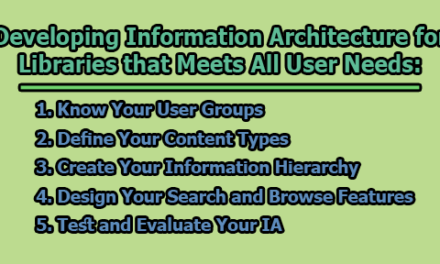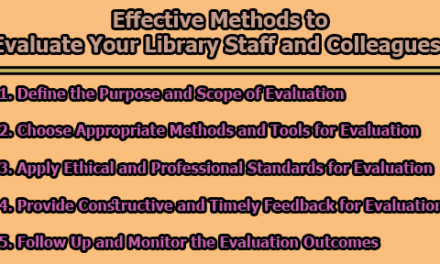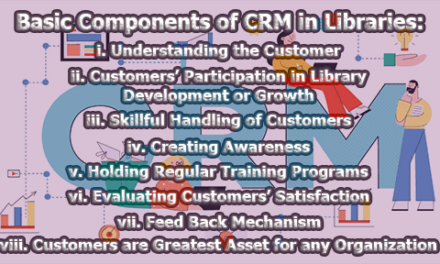An Overview of Total Quality Management:
Total Quality Management (TQM) is a management approach that emphasizes continuous improvement in all aspects of an organization’s operations, products, and services. It involves the use of data, statistics, and other analytical tools to identify and eliminate inefficiencies, defects, and other sources of waste. TQM also involves a strong customer focus, with the goal of meeting or exceeding customer expectations by delivering high-quality products and services. It emphasizes the importance of teamwork, employee involvement, and continuous learning and development. TQM is a comprehensive and integrated approach to quality management, which involves all employees in the organization, from top management to front-line workers. It requires a commitment to quality from everyone in the organization and a willingness to continuously improve processes, products, and services to meet changing customer needs and expectations. In the rest of this article, we are going to explore an overview of Total Quality Management.
Definitions of Total Quality Management:
Some of the definitions of Total Quality Management are given below:
According to Juran and Gryna (1993), Total Quality Management is “a structured system for satisfying internal and external customers and suppliers by integrating the business environment, continuous improvement, and breakthroughs with development, improvement, and maintenance cycles while changing organizational culture.”
Dale and Plunkett (1995) define Total Quality Management as “a management philosophy that seeks to integrate all organizational functions (marketing, finance, design, engineering, and production) to focus on meeting customer needs and organizational objectives.”
In the words of Oakland (2003), Total Quality Management is “a management system for a customer-focused organization that involves all employees in the continual improvement of all aspects of the organization’s activities, from design to delivery and after-sales support.”
According to Goetsch and Davis (2014), Total Quality Management is “a management approach that seeks to optimize quality and performance by involving everyone in the organization in a continuous improvement process that focuses on meeting or exceeding customer expectations.”
Feigenbaum (1991) defines Total Quality Management as “an effective system for integrating quality-development, maintenance, and improvement efforts of the various groups in an organization so as to enable production and service at the most economical levels which allow full customer satisfaction.”
Crosby (1979) defines Total Quality Management as “a management philosophy that stresses the importance of preventing defects rather than detecting and correcting them, and seeks to establish a culture of continuous improvement throughout the organization.”
Principles of Total Quality Management:
Total Quality Management (TQM) is a comprehensive management approach that emphasizes continuous improvement in all aspects of an organization’s operations, products, and services. The following are the key principles of Total Quality Management:
i. Delight the customer: TQM places a strong emphasis on satisfying the customer. This involves understanding customer needs and expectations and designing products and services that meet or exceed those expectations. It also involves delivering products and services in a timely and efficient manner and providing excellent customer service throughout the entire customer experience.
ii. Participation and teamwork: TQM recognizes the importance of involving all employees in the organization in the pursuit of quality. This involves creating a culture of teamwork, collaboration, and communication, where everyone works together to achieve common goals. It also involves creating cross-functional teams that work together to solve problems and improve processes.
iii. Employee involvement and empowerment: TQM recognizes that employees are the key to quality and that they need to be empowered to contribute to the organization’s success. This involves providing employees with the training, tools, and resources they need to do their jobs effectively, and giving them the freedom to make decisions and take ownership of their work.
iv. Continuous improvement and learning: TQM is a continuous process of improvement and learning. This involves using data, feedback, and other tools to identify areas for improvement, and developing strategies to address those areas. It also involves ongoing training and development to ensure that employees have the skills and knowledge they need to contribute to the organization’s success.
v. Senior management commitment: TQM requires the commitment and involvement of senior management in setting the vision, goals, and strategies for the organization. This involves providing resources and support to ensure that TQM is effectively implemented throughout the organization. It also involves creating a culture of accountability, where everyone is responsible for the quality and continuous improvement.
vi. Management by fact: TQM emphasizes the importance of using data, facts, and other evidence to make informed decisions. This involves using tools such as statistical process control, data analysis, and other analytical techniques to monitor and improve quality. It also involves creating a culture of data-driven decision-making, where decisions are based on objective evidence rather than subjective opinions.
vii. Process identification: TQM involves identifying the key processes and systems within the organization that impact quality. This involves understanding how these processes work, and how they can be improved to achieve better results. It also involves documenting processes and procedures and creating standards for how work is done.
viii. People-based management: TQM recognizes that people are the key to quality and success. This involves creating a supportive and empowering work environment that encourages creativity, innovation, and continuous improvement. It also involves recognizing and rewarding employees for their contributions to the organization.
ix. Continuous process improvement: TQM involves a continuous process of improvement and refinement of the organization’s systems, processes, and procedures. This involves identifying opportunities for improvement, developing strategies to address them, and implementing those strategies in a systematic and effective manner. It also involves measuring and monitoring performance to ensure that improvements are sustained over time.
x. System approach: TQM emphasizes the importance of a systemic approach to quality management, where all aspects of the organization are integrated and aligned to achieve common goals and objectives. This involves creating a quality management system that encompasses all aspects of the organization, from design and development to delivery and after-sales support.
xi. Prevention rather than defecting errors: TQM is proactive in identifying and preventing errors, rather than simply detecting and correcting them. This involves developing strategies to prevent errors from occurring in the first place and implementing systems to ensure that errors are caught and corrected before they can impact the customer. It also involves creating a culture of continuous improvement, where everyone is focused on identifying and addressing the root causes of problems.
xii. Self-assessment: TQM involves regular self-assessment and evaluation to identify areas for improvement and ensure that the organization is on track to achieve its goals. This involves measuring performance against established benchmarks and goals and using that data to identify areas for improvement. It also involves soliciting feedback from customers, employees, and other stakeholders to understand how the organization is performing and where improvements can be made.
xiii. Strategic planning: TQM requires a strategic approach to quality management that is aligned with the organization’s overall goals and objectives. This involves developing a quality strategy that is integrated with the organization’s overall strategic plan, and ensuring that all aspects of the organization are working together to achieve common goals.
xiv. Quality measurement: TQM involves measuring and monitoring quality performance in a systematic and consistent manner. This involves developing metrics and benchmarks to measure quality performance and using those metrics to monitor performance over time. It also involves using data and feedback to identify areas for improvement and developing strategies to address those areas.
Overall, the principles of TQM are focused on creating a culture of continuous improvement and quality throughout the organization. This requires a commitment from all levels of the organization, from senior management to front-line employees, and a willingness to embrace change and pursue excellence in everything the organization does. By focusing on the needs of the customer, involving all employees in the pursuit of quality, and continuously improving processes and systems, organizations can achieve success and competitiveness in today’s global marketplace.
Library Science and TQM:
Library Science and Total Quality Management (TQM) have a strong relationship, as TQM principles can be applied to the management of library services to improve customer satisfaction and create a culture of continuous improvement. Here are some key points on this relationship:
- TQM can be applied to the management of library services, as it emphasizes continuous improvement and customer satisfaction.
- The principles of TQM can help libraries to identify areas for improvement in their operations and services, and develop strategies for addressing those areas.
- TQM can help libraries to better understand their customers’ needs and expectations, and to design services that meet those needs.
- TQM emphasizes the importance of employee involvement and empowerment, which can help libraries to create a culture of innovation and excellence.
- TQM can help libraries to improve the efficiency and effectiveness of their operations, by identifying and eliminating waste and inefficiencies.
- TQM requires a commitment to data-driven decision-making, which can help libraries to measure and monitor their performance and make informed decisions.
- TQM can help libraries to develop processes and procedures that are standardized and consistent, which can improve the quality and reliability of their services.
- TQM emphasizes the importance of teamwork and collaboration, which can help libraries to create a culture of cooperation and shared responsibility.
- TQM can help libraries to develop a strategic approach to service delivery, by aligning their goals and objectives with those of the organization and its stakeholders.
- TQM can help libraries to demonstrate their commitment to quality and continuous improvement, which can improve their reputation and enhance their value to the community.
Ways of using TQM in the Library:
According to Sirkin (1993), there are several ways that Total Quality Management (TQM) can be applied in the library setting to improve service quality and customer satisfaction. Here are some of the key ways:
- Focus on customer needs and expectations.
- Solicit feedback from library users.
- Tailor library services to meet user needs.
- Empower library staff and give them more responsibility.
- Involve staff in process improvement initiatives.
- Continuously review library services and operations.
- Identify areas for improvement and set goals for improvement.
- Analyze and improve library workflows and processes.
- Develop standard procedures for library operations.
- Use technology to streamline library processes.
- Measure and monitor library service quality.
- Develop metrics and benchmarks for quality measurement.
- Provide staff with training and development opportunities.
- Encourage teamwork and collaboration between staff and customers.
- Foster a culture of continuous improvement.
- Use data and metrics to inform decision-making.
- Ensure senior management commitment to TQM principles.
- Conduct regular self-assessments to identify areas for improvement.
- Develop a strategic plan for library services.
- Align library goals with organizational goals and stakeholder needs.
Benefits of TQM in Libraries:
Applying Total Quality Management (TQM) principles in libraries can have numerous benefits for both library users and staff. Here are some key benefits of TQM in libraries:
- Improved customer satisfaction due to a focus on meeting user needs and expectations.
- Increased library usage and patronage due to improved service quality.
- Better staff engagement and morale due to employee empowerment and involvement in decision-making.
- Higher staff productivity and efficiency due to streamlined workflows and processes.
- Greater accuracy and consistency in library services due to the use of standard procedures and quality metrics.
- Improved communication and collaboration between library staff and customers.
- More effective use of resources due to the identification and elimination of waste and inefficiencies.
- Enhanced the reputation and brand image of the library due to its commitment to quality service.
- Improved financial performance due to increased library usage and satisfaction, and reduced costs.
- Increased stakeholder loyalty and support due to a demonstrated commitment to quality and continuous improvement.
In conclusion, Total Quality Management (TQM) is a management approach that emphasizes the importance of meeting customer needs and expectations, continuous improvement, employee empowerment and involvement, and the use of data and metrics to inform decision-making. TQM principles can be applied in various settings, including libraries, to improve service quality, increase customer satisfaction, and enhance staff engagement and productivity. In the library setting, TQM principles can be applied in various ways, such as focusing on customer needs, involving staff in process improvement initiatives, continuously reviewing library services and operations, and developing metrics and benchmarks to measure quality. Implementing TQM principles in libraries can result in numerous benefits, such as improved customer satisfaction, higher staff productivity and efficiency, and increased stakeholder loyalty and support. However, TQM is a valuable management approach that can help organizations, including libraries, to provide better service quality, enhance stakeholder satisfaction, and achieve their goals through continuous improvement and employee involvement.
References:
- Oakland, J. S. (2014). Total quality management and operational excellence: Text with cases. Routledge.
- Evans, J. R., & Lindsay, W. M. (2014). Managing for quality and performance excellence. Cengage Learning.
- Sirkin, L. A. (1993). Total quality management in the library. Advances in Library Administration and Organization, 11, 27-49.
- Juran, J. M. (1989). Juran on quality by design: The new steps for planning quality into goods and services. Simon and Schuster.
- Ahire, S. L., Golhar, D. Y., & Waller, M. A. (1996). Development and validation of TQM implementation constructs. Decision Sciences, 27(1), 23-56.
- Mccarthy, M. (1996). A practical guide to Total Quality Management. Kogan Page Publishers.
- O’Dell, C. (1995). Applying total quality management in libraries. Library Journal, 120(10), 44-48.
- Hackman, M. Z., & Johnson, C. E. (2013). Leadership: A communication perspective. Waveland Press.
- Summers, D. C. (2003). Quality management in libraries: The impact on academic library services. The Journal of Academic Librarianship, 29(1), 26-32.
- Yang, C. C. (2003). The effect of total quality management on library services. The Journal of Academic Librarianship, 29(6), 381-388.

Library Lecturer at Nurul Amin Degree College










